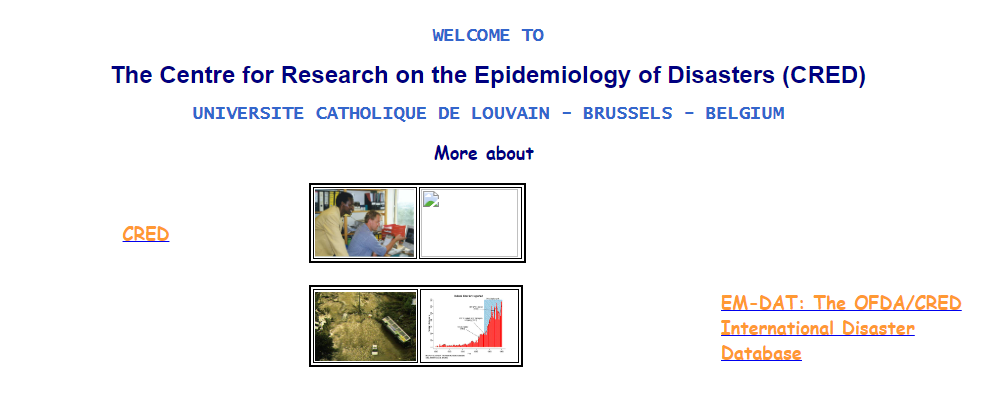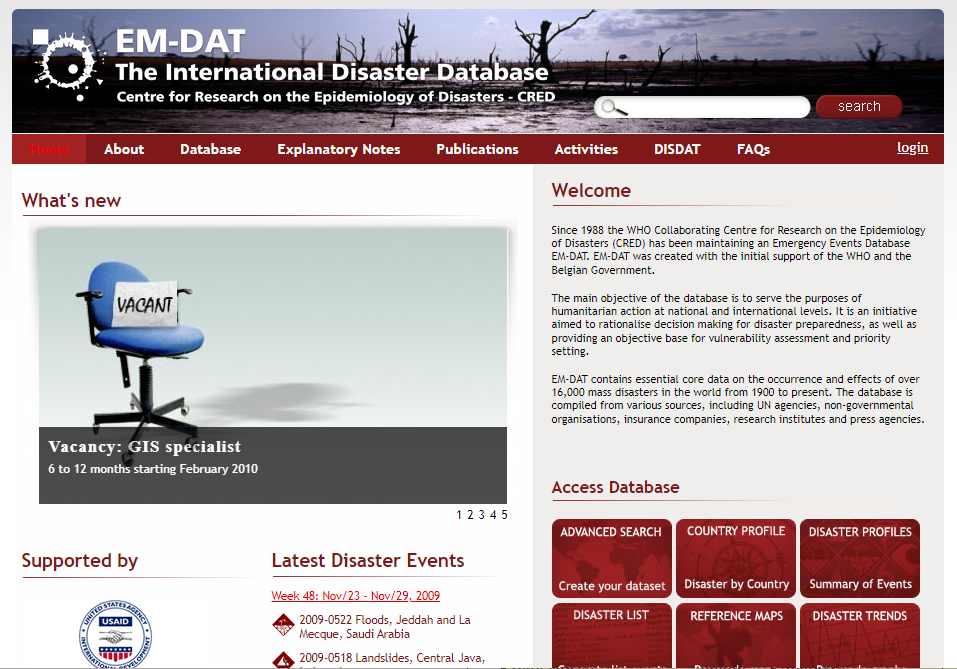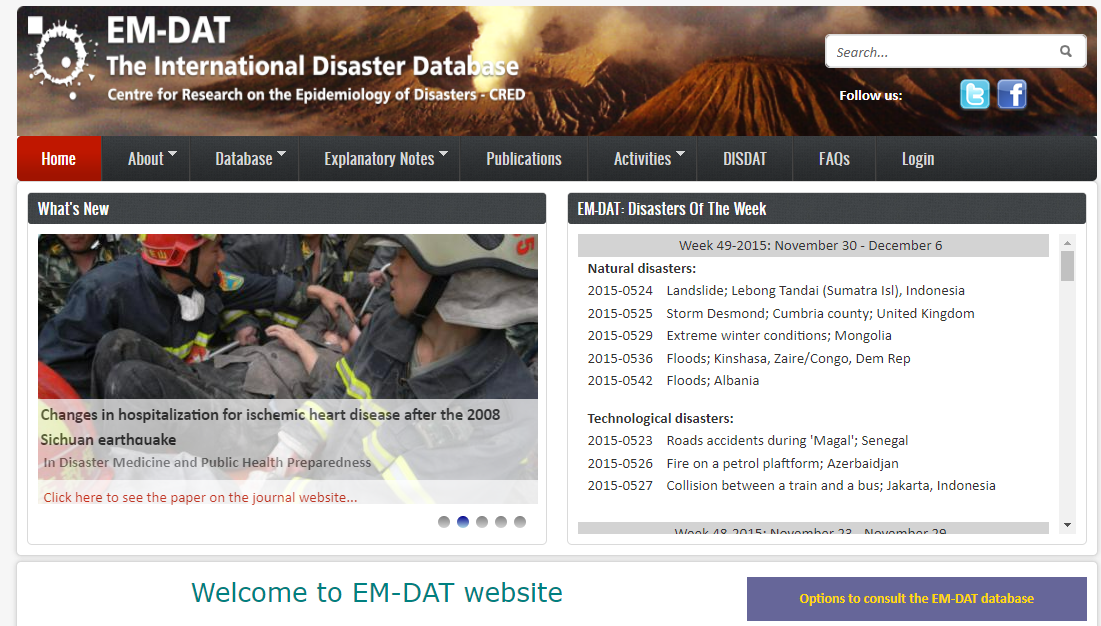EM-DAT is FAIR
The Centre for Research on the Epidemiology of Disasters (CRED), maintaining the Emergency Events Database (EM-DAT), has …

The EM-DAT website has a long history behind it, which we have traced on the Wayback Machine. Initially, the EM-DAT project was promoted on the Centre for Research on the Epidemiology of Disasters (CRED) website. This was in the year 2000, at a time when the World Wide Web had not yet celebrated its 10th birthday.

The CRED website in 2000
In 2004, EM-DAT obtained its own website, which was maintained until October 2007, before migrating to its current domain name: www.emdat.be. In 2009, the content management system (CMS) was updated and EM-DAT acquired a look that it would keep for 6 years.

The EM-DAT website in 2009
In 2015, the website was revamped again, while still using the same content management system.

The EM-DAT website in 2015
In 2022, the content management system was found to be outdated and difficult to maintain. The EM-DAT team, therefore, decided to move towards new technology to offer the latest EM-DAT website in May 2023. The website is much faster, lighter and thus greener, and more maintainable, so sharing content with our community will be easier!
The new website is not the only update that concerns EM-DAT. For over a year, the CRED team has been working on modernizing the entire IT infrastructure of EM-DAT. So stay tuned, as in 2023 we will bring you more news to introduce our improvements. As a teaser, here’s what you can expect in the coming months:
The Centre for Research on the Epidemiology of Disasters (CRED), maintaining the Emergency Events Database (EM-DAT), has …
Margo Tonnelier had the pleasure of presenting our research, “Gender Differences in Years of Life Lost resulting …